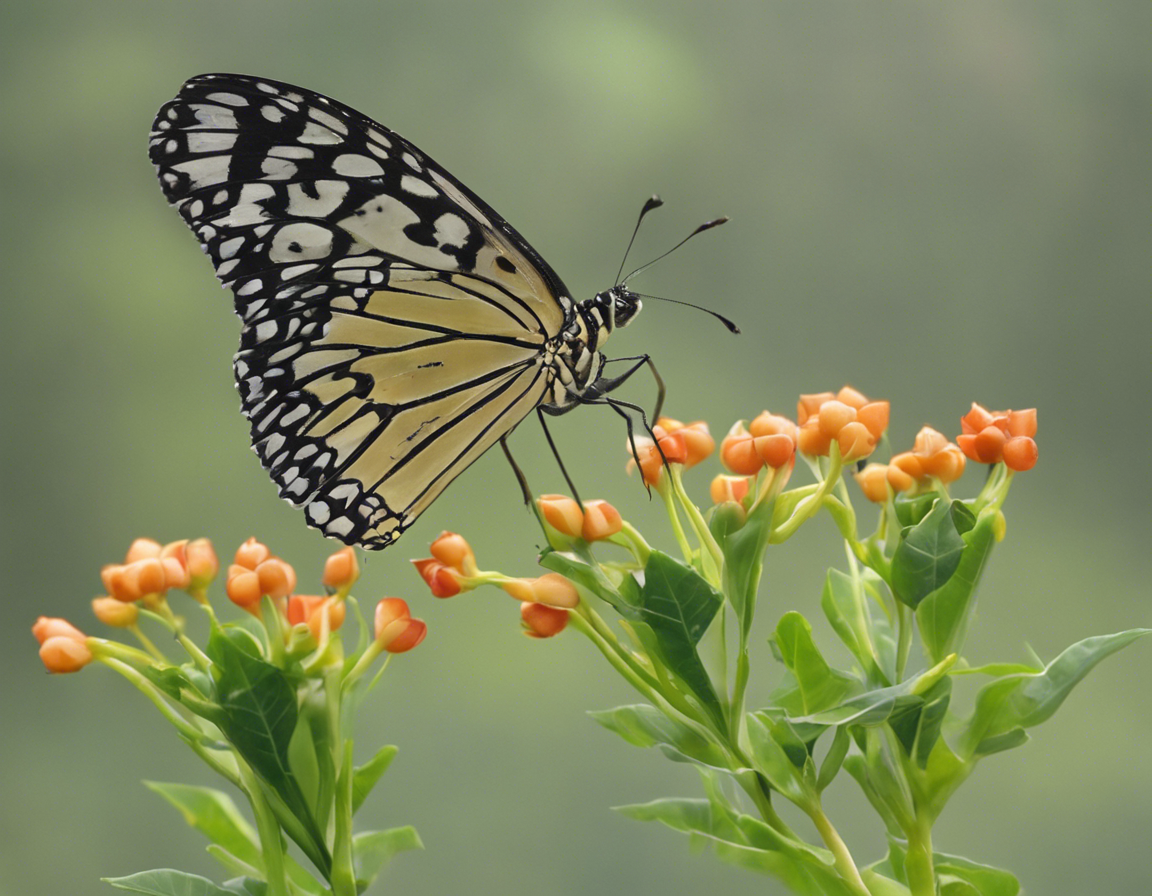Introduction
The Indian Ghost Orchid, also known as Dendrophylax fawcettii, is a rare and elusive orchid species that is native to the forests of the Caribbean and Central America. This delicate epiphyte is considered one of the most endangered orchids in the world, facing numerous threats to its survival. In this article, we will delve into the unique characteristics of the Indian Ghost Orchid, the challenges it faces, conservation efforts to protect it, and what individuals can do to contribute to its preservation.
Overview of the Indian Ghost Orchid
The Indian Ghost Orchid is renowned for its ethereal beauty and elusive nature. This orchid species has white, waxy flowers that resemble ghosts, hence its name. It is an epiphytic orchid, meaning it grows on other plants, typically trees, without harming them. The Indian Ghost Orchid is known for its fragile structure and dependence on specific environmental conditions to thrive. It requires high humidity, dappled sunlight, and well-aerated conditions to grow successfully.
Challenges Facing the Indian Ghost Orchid
Despite its enchanting allure, the Indian Ghost Orchid is facing numerous challenges that threaten its existence:
-
Habitat Loss: Deforestation and habitat destruction due to agricultural expansion, logging, and urbanization have significantly reduced the orchid’s natural habitat.
-
Illegal Harvesting: The Indian Ghost Orchid is prized for its beauty, leading to illegal harvesting for commercial purposes. This unsustainable practice further diminishes wild populations.
-
Climate Change: Global warming has disrupted the delicate environmental balance required for the Indian Ghost Orchid to flourish. Changes in temperature and rainfall patterns directly impact the orchid’s growth.
-
Pollinator Decline: Orchids rely on specific pollinators for reproduction, and disturbances in pollinator populations can disrupt the orchid’s reproductive cycle, leading to reduced seed set and genetic diversity.
Conservation Efforts
To safeguard the Indian Ghost Orchid from extinction, concerted conservation efforts are essential. Some key strategies include:
-
Habitat Protection: Establishing protected areas and reserves that encompass the orchid’s natural habitat to prevent further deforestation and habitat loss.
-
Community Engagement: Involving local communities in conservation initiatives can raise awareness about the importance of preserving the Indian Ghost Orchid and garner support for its protection.
-
Legislation and Enforcement: Implementing laws and regulations to prohibit the illegal harvesting and trade of the Indian Ghost Orchid, coupled with effective enforcement mechanisms to deter poachers.
-
Research and Monitoring: Conducting scientific research to better understand the ecology and biology of the Indian Ghost Orchid, including population dynamics, pollination mechanisms, and preferred habitats.
-
Horticultural Initiatives: Establishing ex-situ conservation programs in botanical gardens and research institutions to cultivate and propagate the Indian Ghost Orchid under controlled conditions, ensuring its survival outside the wild.
What You Can Do to Help
Individuals can also play a significant role in saving the Indian Ghost Orchid by:
- Supporting Conservation Organizations: Donate to reputable conservation organizations that focus on orchid conservation and habitat protection.
- Educating Others: Raise awareness about the plight of the Indian Ghost Orchid through social media, educational events, and presentations to inspire others to take action.
- Avoiding Purchasing Wild Orchids: Refrain from buying wild-collected orchids and only purchase orchids from reputable nurseries that ethically source their plants.
- Volunteering: Participate in local conservation projects or volunteer at botanical gardens to contribute directly to orchid conservation efforts.
- Reporting Illegal Activity: If you suspect illegal harvesting or trade of the Indian Ghost Orchid, report it to the authorities or relevant conservation organizations.
By collectively taking these actions, we can help protect and preserve the Indian Ghost Orchid for future generations to admire and appreciate.
Frequently Asked Questions (FAQs)
- Why is the Indian Ghost Orchid so rare?
-
The Indian Ghost Orchid is rare due to habitat loss, illegal harvesting, climate change, and its specific environmental requirements for growth.
-
Where can the Indian Ghost Orchid be found?
-
The Indian Ghost Orchid is native to the forests of the Caribbean and Central America, primarily in countries like Belize, Honduras, and Guatemala.
-
How does the Indian Ghost Orchid reproduce?
-
The Indian Ghost Orchid primarily reproduces through seeds dispersed by wind or specialized pollinators, such as moths or bees.
-
Are there any success stories in Indian Ghost Orchid conservation?
-
Some conservation initiatives have shown positive results in protecting wild populations of the Indian Ghost Orchid, highlighting the importance of targeted efforts.
-
Can the Indian Ghost Orchid be grown at home?
-
Due to its specific requirements and endangered status, it is not recommended to grow the Indian Ghost Orchid at home. Instead, support conservation efforts to protect it in the wild.
-
What role do orchids play in their ecosystems?
-
Orchids, including the Indian Ghost Orchid, play crucial roles as pollinators and indicators of habitat health in their ecosystems, contributing to biodiversity and ecosystem balance.
-
How long does the Indian Ghost Orchid bloom for?
-
The blooming period of the Indian Ghost Orchid varies but typically lasts for several weeks to a few months, depending on environmental conditions and individual plant health.
-
What is the biggest threat to the Indian Ghost Orchid’s survival?
-
Habitat loss and illegal harvesting pose the most significant threats to the survival of the Indian Ghost Orchid, requiring urgent conservation interventions to mitigate these risks.
-
Are there any ongoing research projects focused on the Indian Ghost Orchid?
-
Yes, researchers around the world are conducting studies on the ecology, genetics, and conservation of the Indian Ghost Orchid to inform conservation strategies and enhance our understanding of this fragile species.
-
How can schools incorporate Indian Ghost Orchid conservation into their curriculum?
- Schools can integrate Indian Ghost Orchid conservation into their curriculum by organizing field trips to botanical gardens, inviting guest speakers for talks on orchid conservation, and conducting educational activities on endangered species and biodiversity.
